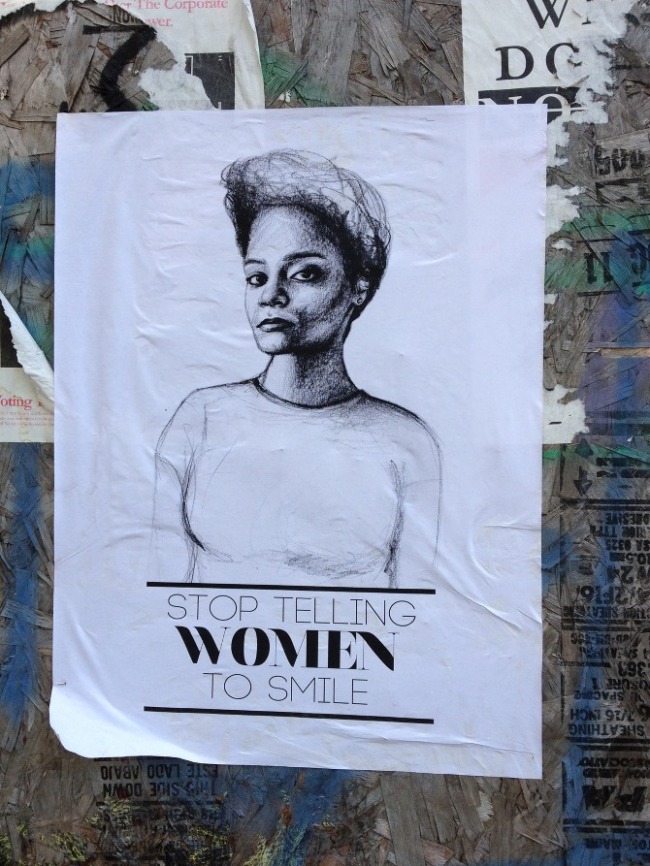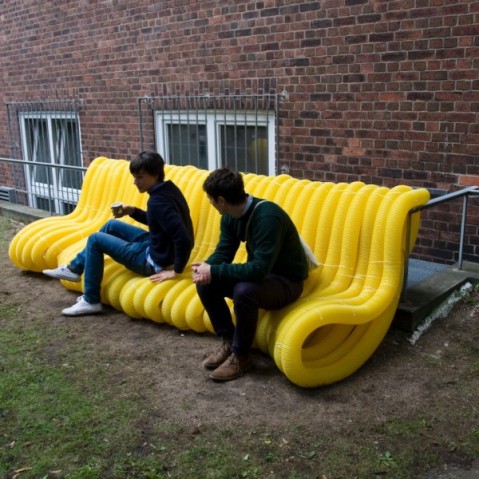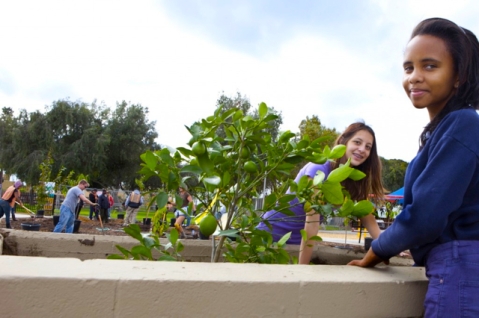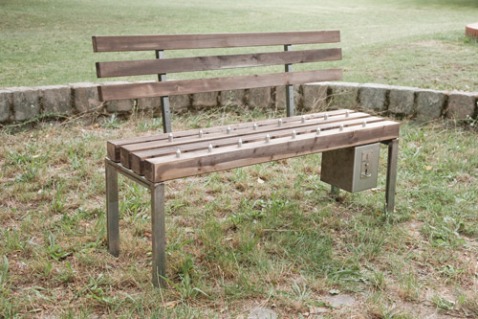Just Smile
For the last five years I’ve been a transit-dependent person. What this means is that I spend a lot of time on foot, a lot of time standing waiting for buses, waiting for trains, and it may or may not surprise you to know that I experience at least one form of street harassment nearly ever day.
There is a spectrum of severity to these experiences but their regularity does not make them easier to endure and their consistency has resulted in a vulnerability that can sometimes feel overwhelming. I’ve never gone unaffected by someone who yells to try and get my attention, intentionally standing back to look at me up and down, walking up to me and putting their faces inches from my own, or honking their horn or making suggestive faces from their car.
I often try to brush these experiences off but I know they’ve affected me. When I’m getting dressed in the morning and purposefully choose to wear clothes that hide my body, when I avoid eye contact on the sidewalk, when I rush to get home before the sun goes down, when I choose not to participate in activities that require long trips, when I hold my breath as I see someone walking towards me at night. I know it affects me.
I experienced the worst form of street harassment in my previous neighborhood. Sometimes I would walk past groups of men seated on the sidewalk who would feel the need to comment on what I was wearing, talk about my body, or inform me that I’d be prettier if I just smiled. Sometimes these men would have the audacity to become outraged when I would ignore them and they would stand up and yell profanities at me as I walked away.
It can be difficult to talk about experiences of harassment but sharing experiences is an important step in raising awareness about the issue. Not only to let those who are being harassed know that they are not alone, but to educate the public about this important issue and reiterate publicly that this is not something that we should just accept as a society.
Artist Tatana Fazlalizadeh has attempted to raise awareness about this issue in a very creative and public way by creating posters that reflect women’s stories and struggles with harassment. Ms. Fazlalizadeh says that her work “attempts to address gender based street harassment by placing drawn portraits of women, composed with captions that speak directly to offenders, outside in public spaces.”
She goes on to say that “Street harassment is a serious issue that affects women world wide. This project attempts to take women’s voices, and faces, and put them in the street – creating a presence for women in an environment where women are a lot of times made to feel uncomfortable and unsafe.”
By bringing this work in to the public realm, Ms. Fazlalizadeh creates the opportunity to simultaneously speak to those being harassed, those doing the harassing and those who may not have the issue on their radar. She is empowering those who may feel victimized by giving them a voice and by allowing visitors on her site to obtain her posters for FREE!, she is strategically given those who want to raise awareness about this issue, the opportunity to do so in their neighborhood.
Unlikely Seats in Hamburg

Oliver Show’s “Street Furniture” series wraps yellow drainage pipes around public infrastructure in Hamburg, Germany. Photo by Der Spiegel via Architizer
Architect Oliver Show decided to turn some of Hamburg, Germany’s least comfortable spaces into squishy seats, lounges and sofas. Mr. Show wrapped common pieces of urban infrastructure like bridge trusses, hand rails and bike racks with bright yellow plastic drainage pipes turning once angular and unlikely elements into comfortable, low-cost, weather resistant places to sit.
Providing pedestrians an opportunity to sit increases their comfort and desire to linger in a place but I wonder how comfortable these seats are for longer than a few minutes. Would these seats only serve strong and able-bodied users? Is it difficult to climb on top of them and must you balance there? Do the pipes sway back and forth? How tightly together they pipes are bound so users (especially children) don’t fall in the spaces in between?
I look forward to testing them out myself one day!

Oliver Show’s “Street Furniture” series wraps yellow drainage pipes around public infrastructure in Hamburg, Germany. Photo by Der Spiegel via Architizer
An Edible Orchard in Los Angeles
On Saturday, January 5th, a revamped Del Aire Park in Los Angeles’ South Bay was revealed to its neighbors. The new park received $4 million dollars in upgrades to its community center, basketball court, and baseball field and in addition to these upgrades, a grant was secured through the Los Angeles County Arts Commission Civic Art Program to plant 27 fruit trees at the park and an additional 60 fruit trees around the neighborhood.
The fruit park (the first of its kind in the state) was created in collaboration with The Office of Supervisor Mark Ridley-Thomas and the Los Angeles County Department of Parks and Recreation and planted by artist collective Fallen Fruit, a group that invites “the citizens of Los Angeles to reconsider their relationship with public and urban space to explore the meaning of community through sharing and creating new and abundant resources.”
At the opening of the park, Supervisor Mark Ridley-Thomas said that “Community gardens and farmers markets are truly the town centers of our communities,” and they become spaces where the community gets to know one another. These kinds of resources can also be incredible important in neighborhoods that do not have easy access to healthy foods.
Over time, the fruit trees in the park and around the neighborhood will grow and give the community plums, pomegranates, peaches, limes, avocados, and apricots, as well as grapes and edible herbs. A wooden sign by the orchard reads: “The fruit trees in this park belong to the public. They’re for everyone, including you. Please take care of the fruit trees and when the fruit is ripe, taste it and share it with others.”
Antistress for Free!
An “antistress” art installation appeared on the side of a bus stop in Milan, Italy.
Would You Pay to Sit?
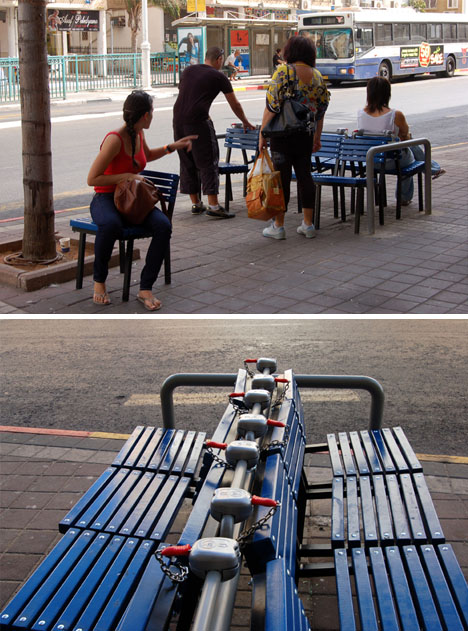
A paid public seating experiment in Bat Yam, Israel by Vincent Wittenberg. Photo by Vincent Wittenberg via Web Urbanist.
One of the reasons a public spaces becomes successful (meaning well-used) is because it is customizable and an important part of being able to customize your space is being able to have many different seating options. Individual, light-weight chairs which are not bolted into the ground, allow you to customize your experience by siting alone, siting in groups, moving in to the shade or moving in to the sun.
Some municipalities and businesses are weary of incorporating these types of chairs in our public spaces because they are understandably afraid these chairs will be stolen. It’s not easy to be secretive about stealing brightly colored chairs in the bustling pedestrian plazas of Manhattan, but for lesser populated areas, stealing street furniture (chairs, tables, umbrellas, trash cans, etc) can be an issue.
Artist Vincent Wittenberg asked the municipality of Bat Yam in Israel if he could research the behavior of individuals who were given the option of paying to sit in a public space and he wondered how many people would pay to customize the space for their own use. Mr. Wittenberg’s work explores the “border points” of public, private and collective spaces and says that he and his researchers “found out that the borders between those spaces are not strict and even flexible. Although ownership of space is important, many residents do cross the border by claiming public or common space for their own private use. This behaviour seems to be peacefully tolerated by the authorities and other residents.”
Mr. Wittenberg proposed that Bat Yam install benches which could also be converted in to individual seats. These seats will only be released once a five Shekel coin has been deposited but once the seat is returned, so is the coin.
Artist Fabian Brunsing tackled similar themes with a piece which criticizes the privatization of our public spaces. His “Pay & Sit” bench installation allows users to pay to sit comfortably on an otherwise spiked bench – but only for a short period of time. Thankfully, a loud warning signal alerts you to the need to get up quickly, before the metal spikes return.
Street furniture being stolen is an important issue but should this issue (and others concerns such as street furniture encouraging negative activity, graffiti, homeless individuals sleeping, etc) deter us from providing furniture at all? Successful public spaces are also those that are comfortable to a diverse audience (with a wide spectrum of physical abilities, those carrying heavy loads, those with children or elderly companions, etc) and therefore they are important to public spaces. These artists explore and exploit our desire for more successful public spaces.

